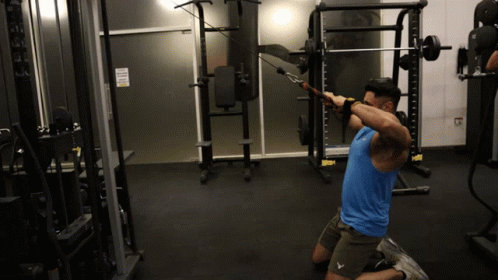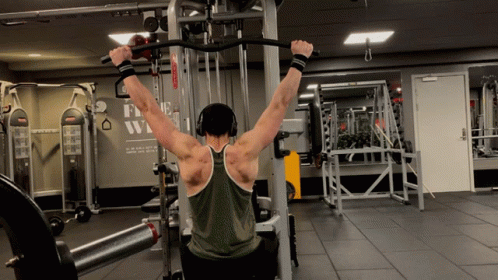Search the content
-
DEEP SQUAD EXERCISE....deep squad exercise Smith machine squats are a variation of traditional squats performed using a Smith ma...
-
A decline push-up is a variation of the traditional push-up that targets the upper chest and shoulders more intensely. Here's how it ...
-
Handstand Push-Up Handstand Push-Up Muscles Worked Shoulders (Deltoids) Triceps Upper Ches...
Thursday, July 17, 2025
latpull down
The Lat Pulldown is a popular strength training exercise that primarily targets the latissimus dorsi muscles (lats) of the back. It is performed on a cable machine using a wide bar or other attachments.
The Lat Pulldown is a fundamental strength training exercise designed to target the latissimus dorsi muscles, commonly known as the "lats. This exercise is typically performed on a lat pulldown machine, which includes a weight stack, cable system, and a wide grip bar or alternate attachments like V-bars or rope handles.
some important Muscles :
Latissimus dorsi
Secondary Muscles:
Biceps brachii
Rhomboids
Trapezius (lower and middle)
Posterior deltoids.
Tuesday, July 1, 2025
face pull exercise
Rope Face Pull Exercise
What is the Rope Face Pull Exercise?
The face pull is a strength training exercise that targets the upper back and shoulders—especially the posterior deltoids, rotator cuff, traps, and upper back. It’s excellent for improving posture and stability in the shoulder joints.
Benefits:
- Builds rear deltoids
- Improves shoulder stability
- Corrects posture
- Targets traps, rotator cuff, and scapula
Muscle Identification During Face Pull

Deltoid
Trapezius
Upper Back
Scapula
Muscles Worked
- Rear deltoids (posterior delts)
- Upper traps
- Rhomboids
- Rotator cuff (especially infraspinatus and teres minor)
triceps rope gym attachment
🛒 Buy Now on Amazon
Disclosure: This post contains affiliate links. As an Amazon Associate
Muscle Explanation: Upper Traps and Rhomboids
* Upper Traps
- Location: Back of neck to shoulders
- Functions: Elevates shoulders, supports neck movement, stabilizes upper body
- In Face Pull: Stabilizes shoulders, supports rope pulling motion
* Rhomboids
- Location: Between shoulder blades and spine
- Functions: Retract scapula, improve posture, assist shoulder movement
- In Face Pull: Active during rope pull, helps squeeze blades together
Summary Table
| Muscle | Function | Location | Role in Face Pull |
|---|---|---|---|
| Upper Traps | Elevate shoulders, neck movement | Neck to shoulders | Supports upward pulling motion |
| Rhomboids | Retract & stabilize shoulder blades | Between scapula & spine | Improves posture, squeezes blades |
🏋️♂️ How to Perform Rope Face Pulls
** Setup:
- Use rope attachment on cable machine
- Set pulley at eye or upper chest level
- Use a neutral grip
- Stand with tension in rope (staggered stance)
-- Execution:
- Pull rope toward your face
- Elbows flare out, separate rope ends
- Squeeze shoulder blades at peak
- Return slowly with control
* Reps & Sets:
- Reps: 10–15
- Sets: 3–4
- Rest: 30–60 seconds between sets
* Form Tips:
- Keep core tight
- Do not shrug shoulders
- Focus on scapular retraction
- Use moderate weight to maintain form
* Alternatives:
- Resistance Band Face Pulls
- TRX Face Pulls
- Dumbbell Rear Delt Rows
- Common Mistakes:
- Using too much weight (affects balance/form)
- Pulling with biceps instead of upper back
- Not fully separating the rope ends
Subscribe to:
Comments (Atom)
Fitness Hub
Fitness Hub FitnessHub ☰ Home About Us ...



